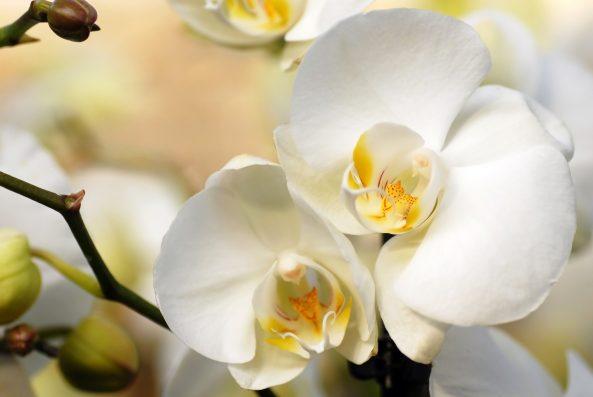If You Want Healthier And More Vibrant Orchid Blooms, Here’s How And When To Prune This Beautiful Plant

Orchids, with their exotic allure and myriad forms, can be a real showstopper in your indoor garden. But to keep them flourishing, pruning is key.
It’s not just about cutting back the old; it’s a careful art that ensures your orchid continues to bloom beautifully.
So, here’s everything you need to know about orchid pruning, from the importance of sterilizing shears to the nuances of dealing with different orchid types.
A Must-Do First Step: Steriliing Your Shears
Before you make that first cut, remember that sterilization is crucial.
Unsterilized shears can actually introduce harmful bacteria or fungi to your delicate orchids.
So, a simple wipe with rubbing alcohol or a dip in a bleach solution (one part bleach to nine parts water) will do the trick. Then, let the shears dry completely before you start snipping.
This step is non-negotiable if you want to keep your orchids healthy.
Understanding Your Orchid: Monopodial Vs. Sympodial

Photo 22565704 © Yulia – Dreamstime.com – illustrative purposes only
Orchids come in mainly two growth types– Monopodial and Sympodial.
Monopodial orchids, like the popular Phalaenopsis, grow upwards from a single stem. Meanwhile, Sympodial types, such as Cattleyas and Dendrobiums, spread outwards.
Understanding this difference is crucial when pruning. For Monopodial orchids, you’ll focus on trimming old flower spikes, whereas for Sympodial orchids, you’ll need to look for old pseudobulbs to prune.
How To Prune For Prolonged Blooms
It’s important to note that pruning isn’t just about plant health; it’s also about prolonging the beauty.
By carefully pruning flower spikes after blooms have faded, especially in Monopodial orchids, you encourage new flower spikes to grow.
All you have to do is cut just above a node (a small bump on the stem) that’s closest to the base of the plant. This will then encourage the plant to produce another spike for a continued display of flowers.
Health First: Removing Damaged Leaves
Also, keep in mind that pruning isn’t always about encouraging growth. Sometimes, leaves can just become diseased or rotten, and it’s essential to remove them to prevent the spread.
In these cases, use your sterilized shears to cut the leaf at the base where it meets the stem. Just be careful not to damage any healthy tissue.
Removing these leaves not only improves the plant’s health but also its appearance.
Timing Is Key: When To Prune For Best Results
Now, the best time to prune depends largely on the type of orchid you have and its blooming cycle.
But generally, the ideal time is right after the blooms have dropped. This is when the plant enters a period of less active growth and can recover more efficiently from pruning.
However, always avoid pruning during the dormant phase, as this may just stress out the orchid and impede future growth.
If true crime defines your free time, this is for you: join Chip Chick’s True Crime Tribe
She Lives In An A-Frame Home That’s Woodsy Yet Chic And Only Cost A Total Of $83,000
Sign up for Chip Chick’s newsletter and get stories like this delivered to your inbox.
More About:Gardening